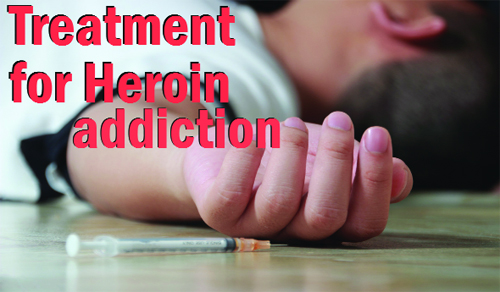Dr. Surinder Sodhi
HEROIN equal death. If you do nothing to get out, you end up dying. To be a heroin addict is to be imprisoned. In the beginning, you think heroin is your friend (they may seem to help you escape the things or feelings that bother you). But soon, you will find you get up in the morning thinking only about heroin.
“Your whole day is spent finding or taking heroin. You get high all afternoon. At night, you put yourself to sleep with heroin. And you live only for that. You are in a prison. You beat your head against a wall, nonstop, but you don’t get anywhere.
In the end, your prison becomes your tomb.”
Many people do not understand why or how other people become addicted to drugs. It is often mistakenly assumed that drug abusers lack moral principles or willpower and that they could stop using drugs simply by choosing to change their behavior. In reality, drug addiction is a complex disease, and quitting takes more than good intentions or a strong will. In fact, because drugs change the brain in ways that foster compulsive drug abuse, quitting is difficult, even for those who are ready to do so. Through scientific advances, we know more about how drugs work in the brain than ever, and we also know that drug addiction can be successfully treated to help people stop abusing drugs and lead productive lives.
What is Drug Addiction?
Addiction is a chronic, often relapsing brain disease that causes compulsive drug seeking and use, despite harmful consequences to the addicted individual and to those around him or her. Although the initial decision to take drugs is voluntary for most people, the brain changes that occur over time challenge an addicted person’s self-control and hamper his or her ability to resist intense impulses to take drugs. In this article we specifically concentrate on heroin abuse.
What are the treatments for heroin addiction?
A variety of effective treatments are available for heroin addiction, including both behavioral and pharmacological (medications). Both approaches help to restore a degree of normalcy to brain function and behavior, resulting in increased employment rates and lower risk of HIV and other diseases and criminal behavior. Although behavioral and pharmacologic treatments can be extremely useful when utilized alone, research shows that for some people, integrating both types of treatments is the most effective approach.
When people addicted to opioids first quit, they undergo withdrawal symptoms (pain, diarrhea, nausea, and vomiting), which may be severe. Medications can be helpful in this detoxification stage to ease craving and other physical symptoms, which often prompt a person to relapse. While not a treatment for addiction itself, detoxification is a useful first step when it is followed by some form of evidence-based treatment.
Medications developed to treat opioid addiction work through the same opioid receptors as the addictive drug, but are safer and less likely to produce the harmful behaviors that characterize addiction.
Behavioral Therapies
The many effective behavioral treatments available for heroin addiction can be delivered in outpatient and residential settings. Approaches such as contingency management and cognitive-behavioral therapy have been shown to effectively treat heroin addiction, especially when applied in concert with medications. Contingency management uses a voucher-based system in which patients earn “points” based on negative drug tests, which they can exchange for items that encourage healthy living. Cognitive-behavioral therapy is designed to help modify the patient’s expectations and behaviors related to drug use and to increase skills in coping with various life stressors.
Every sector of community has its specific role in handling this menace as :-
ROLE OF PARENTS : It is very crucial in handling the kids. They have to nurture their kids in positive environment and they must boost them with moral values, there role as parents become more valuable when the child is addicted as its very complex and tedious procedure to deaddict the child. There patience love care confidence and will power is tested to fullest in combating this situation. Parents must know one thing that addiction in itself is a disease and it is cured only by following scientific technique and proper medication.
ROLE OF TEACHERS : Teachers are important link in this thing. They have to keep a strict vigil on students and they must remain aware of their behaviour and must observe change in the performance of students. They must talk to the students and must educate them regarding the dangers of addiction.
ROLE OF MEDIA : Media has to take most important role in educating the youth regarding the harmful effects of the herlin addiction. They must show the community that the heroin addiction is a dead end and if a person is into it deaddiction is very much possible that requires will power and confidence with a clean intent. Media has to make an environment against the drugs.
ROLE OF POLICE: Police is the most important as being the law enforcers. They must keep the full record of the criminals who deal in drugs mostly they have to coordinate with different states in curbing this thing. They must remain proactive and keep a watch on the situation. Police has to educate the local public regardind this menace.
ROLE OF GOVT : Govt has to make new and strict laws against the drug policies. NDPS ACT is not that strict and it requires ammendmants from time to time. Conviction rate has to increase and person once caught in drug usage/ handling / transportation cases must not get relaxation from the court, and govt. must ensure they got punished vigrously. The govt in collaboration with different NGOs do the rallies and educational lectures and let the people know about the dreaded causes of the heroin. The govt also take steps to seal the borders and make strict vigil on interstate communication and transportation of the heroin.
(The author is faculty in Nephrology Department GMC, Jammu)
Trending Now
E-Paper


